A U.S. Army unit used a combination of radio frequency emitters pumping out false signals and inflatable decoy artillery pieces to lure their opponents into attacking and revealing their positions in an exercise earlier this year. This underscores the importance of the service’s efforts to introduce new and improved electronic warfare capabilities, as well as expand its ability to defend against enemy forces doing the same, as part of its larger modernization efforts.
Col. Josh Glonek, head of the 3rd Brigade Combat Team, 10th Mountain Division, talked about using the emitters and decoys, as well as other developments, with Defense One‘s Lauren Williams last week. The interview was streamed virtually as part of the outlet’s State of Defense 2025: Army virtual conference. 3/10th Mountain, which wrapped up a deployment to multiple locations in Europe in March, is one of three brigades the Army is using as testbeds for its Transforming in Contact modernization initiative.
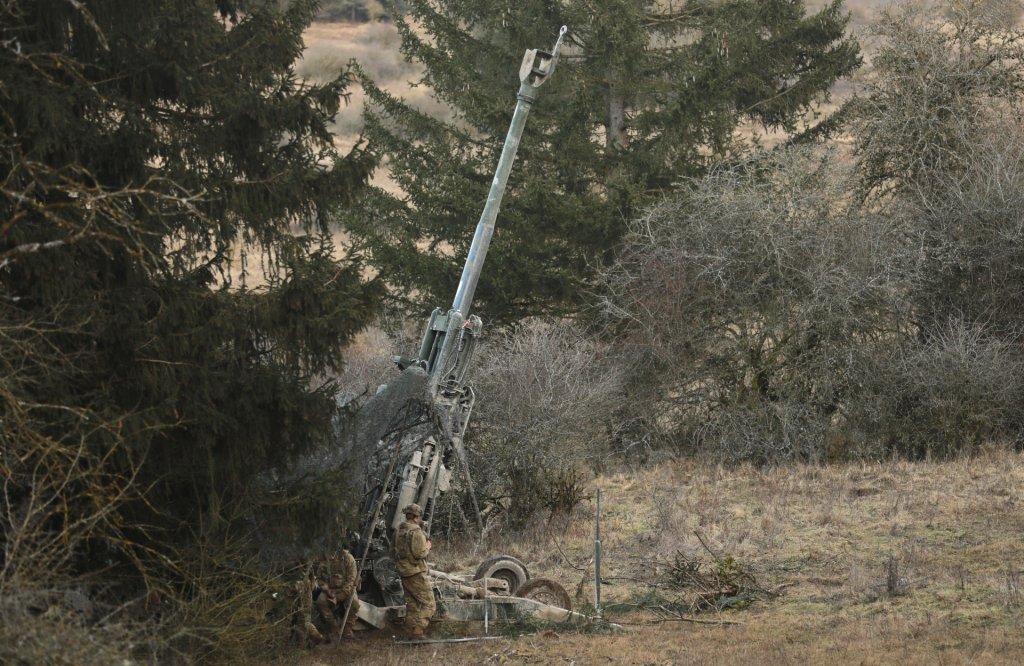 Members of the 3rd Brigade, 10th Mountain Division train in Germany in January 2025. US Army
Members of the 3rd Brigade, 10th Mountain Division train in Germany in January 2025. US Army “So it is something that we as an Army are trying to adapt to. as well, to learn more about, to employ more electronic warfare systems down at the brigade level and below,” Glonek said. “We employed these during our JMRC rotation, where we had electronic warfare teams that were out detecting the enemy. But we also used electronic warfare to help deceive the OPFOR that we fought against.”
OPFOR here stands for Opposing Force, which refers to the mock enemy forces in training exercises. The JMRC is the Army’s Joint Multinational Readiness Center in Germany.
“So one of the important efforts that we conducted during the exercise was a deception effort where we placed electromagnetic emitters that would project a signal that we knew the enemy was looking for with their EW equipment, and we placed these adjacent to inflatable artillery guns,” Glonek continued. “And so the idea there was, rather than be able to target a real artillery [piece] that were hidden quite well, we had decoys that were offset.”
Glonek did not provide further details about the emitters or decoys used in the exercise. The U.S. military has a variety of signal emitters in service now, many of which are used to replicate threats during training, as well as for test and evaluation purposes. Passive electronic support measures systems (ESM) can pick up these signals and geolocate them. Existing signal emitters are often paired with mock targets to add additional fidelity for testing and training purposes. Modern decoys, as well as surrogate targets, can also include built-in features to replicate electromagnetic signals and infrared signatures to make them more representative of the real thing.
 Members of the 10th Mountain Division train with a signal emitter at Fort Drum, New York, in 2023. Whether or not this was among the emitter types 3/10th Mountain used during the recent JMRC rotation is unknown. US Army
Members of the 10th Mountain Division train with a signal emitter at Fort Drum, New York, in 2023. Whether or not this was among the emitter types 3/10th Mountain used during the recent JMRC rotation is unknown. US Army 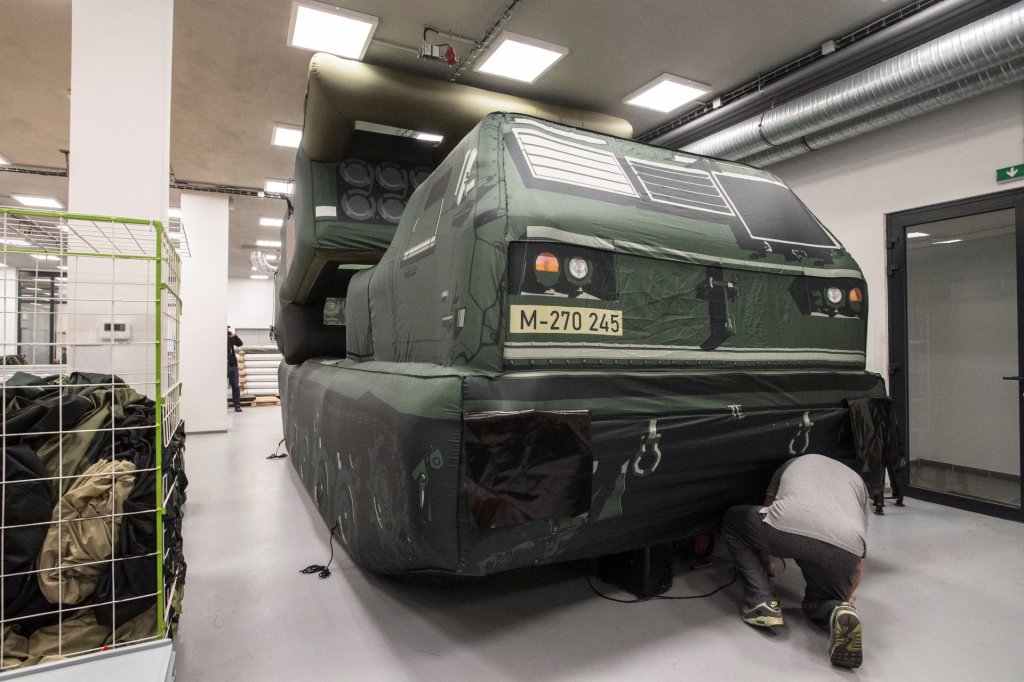 A stock picture of an inflatable decoy made in the Czech Republic representing a U.S. M270 Multiple Launch Rocket System. MICHAL CIZEK/AFP via Getty Images MICHAL CIZEK
A stock picture of an inflatable decoy made in the Czech Republic representing a U.S. M270 Multiple Launch Rocket System. MICHAL CIZEK/AFP via Getty Images MICHAL CIZEK“As the enemy detected those signals, they then were able to confirm the presence [of artillery] with either a drone or a ground scout, and on three occasions over the course of our rotation they actually fired at our decoys,” he added. “This, of course, [was] what we wanted to happen. So we had our radars in position to detect their rounds.”
It’s worth noting here that this highlights the ever-increasing use of drones on the battlefield, often in cooperation with electronic warfare systems and other capabilities like counter-battery radars, to find and positively identify targets, as well as provide improved overall situational awareness. In this case, the 3/10th Mountain subsequently ‘destroyed’ the OPFOR artillery with simulated return fire.
The use of decoys to bait enemy forces, including artillery, into wasting time and resources on fake targets and exposing themselves as a result is not new. Deception leveraging the electromagnetic spectrum is also a well-established tactic.
However, Glonek’s anecdote does still highlight the importance of electronic warfare to the U.S. military, as well as ever-growing threats in the electromagnetic spectrum. Observations from the ongoing war in Ukraine have also reinforced just how critical dominating in the electronic warfare realm is to succeeding in modern warfare. Ukrainian forces are making significant use of often high-fidelity physical decoys, as well.
Ukrainian decoy IRIS-T system with AN/MPQ-64 Sentinel radar system, obviously of very high quality.
It is suspected that one of these decoys was destroyed by a Russian strike (third video) in Kharkiv Oblast. The system was placed right in the middle of a known air defence base… pic.twitter.com/nFIJVBWXm7
“It’s an example of what’s happening out there on the battlefield today in Ukraine and other places where electronic warfare is becoming a very critical part of the battle,” the commander of 3/10th Mountain said of the use of signal emitters and decoys during the JMRC rotation.
“We are paying a lot of attention to how the electromagnetic environment is being impacted in Ukraine. And one of the things that anyone who studies that conflict closely sees is that it’s changing very rapidly,” he added. “So drones that might work well one week might not even be able to fly the next week, because really the EW atmosphere is iterating at such a fast pace.”
“What seems to be happening today, because technology is evolving so rapidly, [is] that these cycles of action and counter action are occurring on a weekly or even a daily basis, and that probably isn’t happening anywhere faster than [it is with] electronic warfare,” he continued.
At the same time, Glonek’s comments raise questions about the degree to which the Army continues to lag in modernizing its electronic warfare capabilities, which largely eroded following the collapse of the Soviet Union, as well as its ability to protect against threats in the electromagnetic spectrum. Well before Russia launched its all-out invasion of Ukraine in 2022, the Army was aware that electronic emissions signatures create serious vulnerabilities for its units that are only set to grow as they integrate ever-more networking and other electronic capabilities.
“Concealment will help you stay alive a little longer in the close fight,” then-Army Col. Scott Woodward wrote in a social media post back in 2020. “What does your EW footprint look like is the larger question. If I can see you like this, it doesn’t matter how much camo you have.”
These were taken at the National Training Center, in California. Concealment will help you stay alive a little longer in the close fight.
What does your EW footprint look like is the larger question. If I can see you like this, it doesn't matter how much camo you have pic.twitter.com/EihBe4nEG3
The post included an annotated satellite image showing the electronic emissions signature of a battalion-sized element and supporting forces during an exercise at the National Training Center at Fort Irwin in California. At the time, Woodward was commander of the 11th Armored Cavalry Regiment, the NTC’s dedicated OPFOR unit, which you can read more about here. He has since been promoted to the rank of brigadier general and is currently Deputy Commanding General-Support for the 2nd Infantry Division in South Korea.
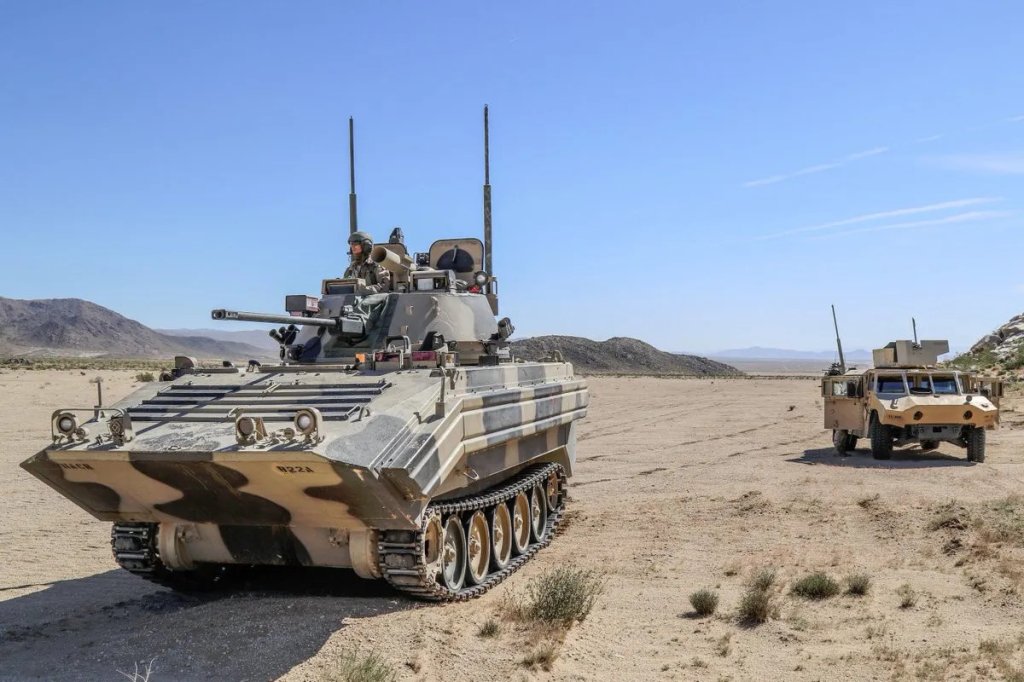 The 11th Cavalry Regiment has a fleet of visually modified (VISMOD) vehicles, some of which are seen here, to act as surrogates for foreign types during training exercises. US Army
The 11th Cavalry Regiment has a fleet of visually modified (VISMOD) vehicles, some of which are seen here, to act as surrogates for foreign types during training exercises. US Army Since 2020, the Army has been working to integrate a growing number of electronic warfare suites, many of which are mobile, being mounted on both unarmored and armored vehicles. Systems that individual personnel can carry on their backs are also becoming increasingly more widespread within the service, as well as elsewhere across the U.S. military.
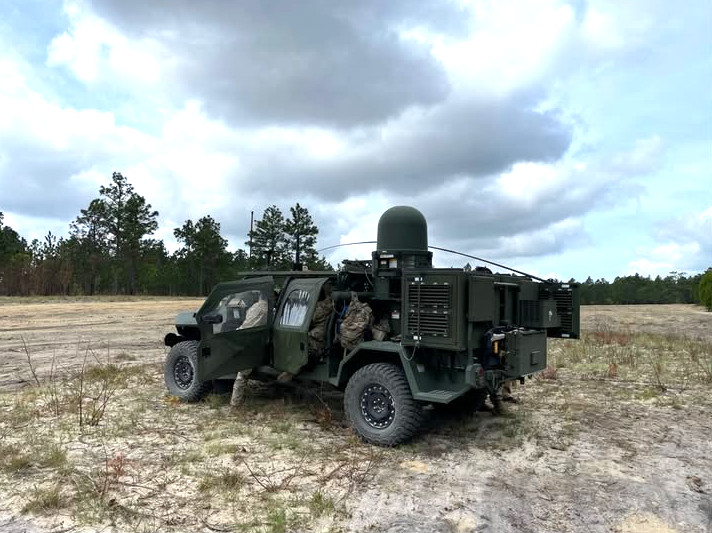 The Tactical Electronic Warfare System-Infantry, which is mounted on the 4×4 Infantry Squad Vehicle (ISV), is one of the Army’s newest electronic warfare systems. US Army
The Tactical Electronic Warfare System-Infantry, which is mounted on the 4×4 Infantry Squad Vehicle (ISV), is one of the Army’s newest electronic warfare systems. US Army The same kinds of questions about the Army’s pace of modernization extend to other global battlefield trends, as well.
“Rather than the traditional way of having a forward observer move across the battlefield to kind of get eyes [on] and identify a target, call for fire, what we’re seeing is the mass use of drones to rapidly fly around the battlefield, and to get eyes on those targets, and to enable a call for fire, which is very, very different from how we’ve done it in the past,” Col. Glonek also told Defense One‘s Lauren Williams last week. “We tried to replicate some of this at our Joint Multinational Readiness Center rotation that we conducted up in Germany, and the Army fielded us a very high density of drones on this deployment to get us ready for this exercise, to really test this out. We had over 150 of them going into the rotation. And as we fought is a new Transform[ing in Contact] brigade for the Army, 90% of the fire missions that we directed, were all called and observed by a drone.”
“So that’s a big change there that’s allowing us to really kind of saturate the battlefield with sensors,” he added.”
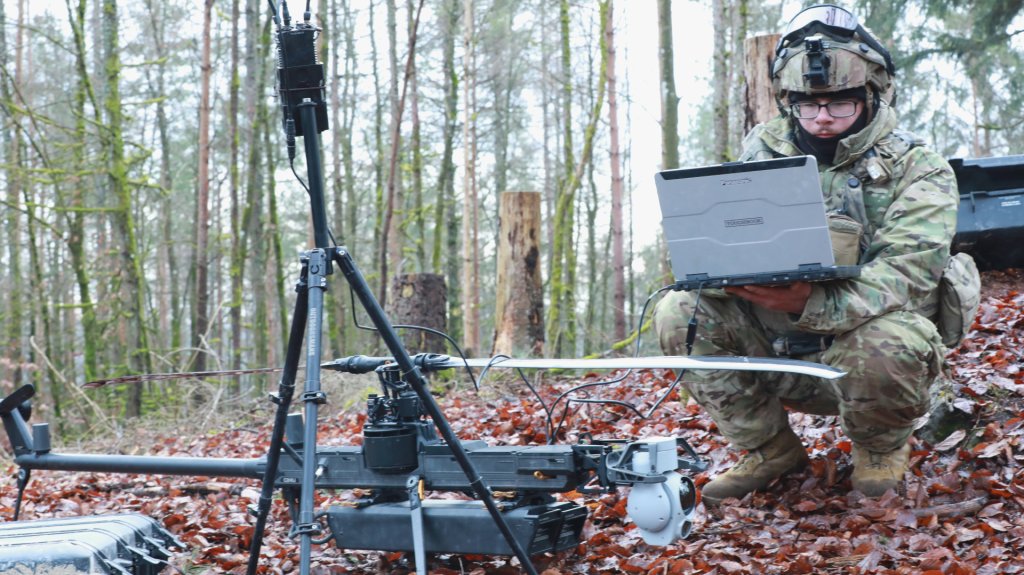 A member of 3/10th Mountain with an Anduril Ghost drone helicopter at the JMRC in January 2025. US Army Staff Sgt. Tristan Peete
A member of 3/10th Mountain with an Anduril Ghost drone helicopter at the JMRC in January 2025. US Army Staff Sgt. Tristan PeeteGlonek’s remarks here are notable given that various tiers of drones, including smaller hand-launched types, have now been in Army inventory for decades. The service has also been very publicly working through multiple efforts for years now to expand the use of uncrewed aerial systems even among small units. Both sides of the conflict in Ukraine drones for spotting artillery fire on a daily basis, something the commander of 3/10th Mountain also noted that the OPFOR was doing in the recent JMRC rotation. That this is still apparently novel even for one of the Army’s three modernization testbed units is significant.
The Army clearly understands the significance of growing its electronic warfare capabilities, as well as its other modernization efforts, as is underscored by 3/10th Mountain’s forces deceiving the OPFOR during the recent exercise in Germany. At the same time, there is still much work to be done.
Contact the author: [email protected]

 By The War Zone | Created at 2025-04-03 20:41:13 | Updated at 2025-04-04 15:10:29
18 hours ago
By The War Zone | Created at 2025-04-03 20:41:13 | Updated at 2025-04-04 15:10:29
18 hours ago








